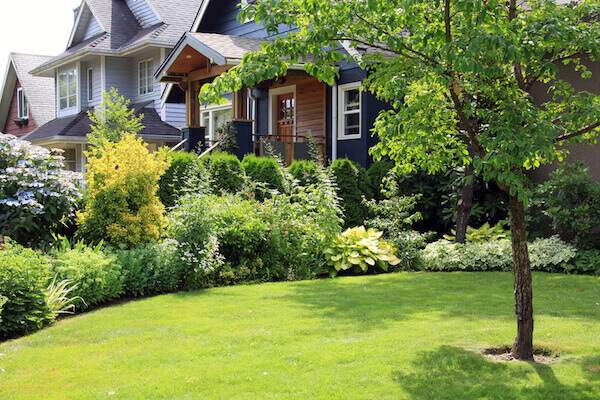
Health and Maintenance of Shade Trees
More than half (some professionals say up to 80 percent) of tree health problems come from soil or root system problems. Trees that are affected by these problems are not just in our Florida parks, but also on our Florida lawns! There is plenty that can be done to improve the health of shade trees, and today we’ll be exploring all we can do to make a difference in our community, starting with just our front or back lawn.
- Remove Grass and Ground Covers: Removing grass from under the canopy can increase the health of many trees more than any other treatment. This eliminates the need for operating mowing equipment under the canopy. Eliminating mowing reduces trunk injury which is severely damaging to trees. Eliminating mowing reduces soil compaction resulting in increased air and moisture exchange in the soil. Lack of turf also eliminates grass root competition for water and nutrients. This allows tree roots to grow unimpeded by turf roots. If the tree is in decline, consider replacing all ground covers and grass with a thin mulch layer. This will allow tree roots to grow unimpeded by competition from any other plants.
- Restrict Access: About half of the root system is under the canopy of the tree. The other half is outside the edge of the branches. Restrict access to the root system by planting ground covers, building low walls, or installing fences around the root system. This keeps people and machinery off of the soil under the canopy. People and machinery compact soil making it difficult for air to penetrate the soil. Low oxygen concentrations in soil and hard soil result in poor tree root growth.
- Place Trees in Beds: Trees placed in beds of ground covers and/or mulch will be healthier than trees placed in turf. Mowing equipment compacts soil resulting in reduced tree root growth, and equipment damages bark. String trimmers also cause tremendous damage to trees and can kill them by cutting into bark around the trunk. Placing trees in beds eliminates these problems entirely. Both newly planted and existing trees will benefit from placing them in a bed.
- Add Organic Matter: Organic matter can be incorporated into the top 6 to 10 inches of soil using a soil excavation tool. Almost all urban soils can benefit from this treatment because many are deficient in organic matter. Organic matter encourages beneficial microorganisms and earthworms associated with healthy soil. Begin by loosening soil with the air spade. Some tree roots may be temporarily exposed but will be quickly covered. Next, add several inches of well-decomposed organic matter to the loosened soil and mix it together using the air spade. This mixture will scatter and settle in between tree roots as it is mixed. Settle the mixture with water and add a thin (2 to 3 inches) layer of mulch if desired. Do not drive vehicles on this area after settling the mixture and limit walking on this area in the future as much as possible. The resulting loosened soil provides an inviting environment for tree root growth.
- Remove Stumps: Stumps of dead trees can be removed from the site to reduce inoculum potential from ganoderma and armillaria trunk and root rot. These two fungi are responsible for decline of trees in urban and suburban landscapes.
- Improve Your Soil Situation: Removing all soil that is above the main roots could improve tree health. Compacted soil restricts root growth and can lead to unhealthy trees. Several methods are employed to improve soil conditions including vertical trenching, incorporating organic matter, and air or water injection into soil. If diagnostic tests show that mycorrhizae are lacking and soil conditions are conducive for mycorrhizae development, addition of products containing spores and other components of mycorrhizae may improve tree health. A growth regulator called paclobutrazol added to soil around the base of the trunk appears to shift growth from shoots to roots. This could help trees recover from construction-related injuries by slowing top growth while the root system catches up. Finally, the addition of vitamins, humic acids, and other organic derivatives are sold as remedies for numerous plant maladies.
As you can see, there are many different things we can do to improve the health of our trees, and it all can start from your yard.
Spreading awareness of how we can best work with our yards and make them Florida-Friendly is vital, and with these starting points, there’s no doubt that we can better our environment.